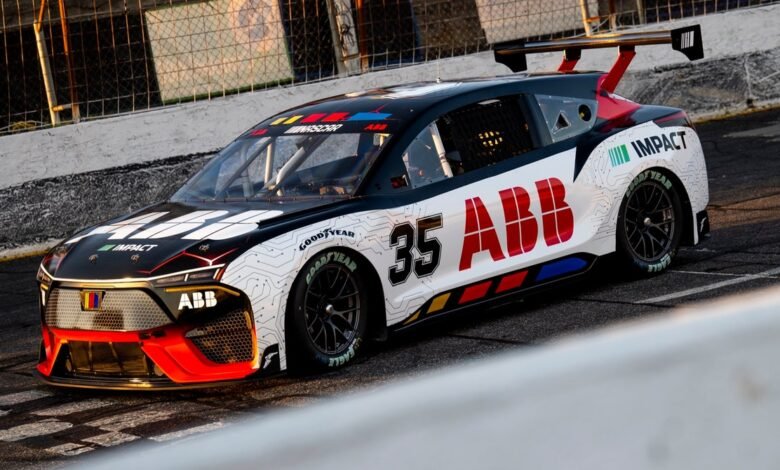Decoding the ABB Nascar EV Prototype

Right now, all-electric race cars struggle at running flat-out around high-speed ovals—the kind of racing that defines most of the Nascar season. With regenerative braking, or regen, EVs turn deceleration into energy that goes back into the battery, but that trick doesn’t work on tracks where drivers keep the accelerator pinned to the floor lap after lap.
“The first place they would likely run would be road courses,” said Bozi Tatarevic, a motorsports consultant and race-car mechanic. “Because of the way that regen works, it’s really not going to be effective on big ovals because you’ll drain the battery quickly.”
That probably explains why Nascar rolled out the EV prototype at the Chicago Street Race, a competition run on closed-off public roads in Grant Park. The Chicago event is a massive departure from typical Nascar races, which take place on purpose-built speedways with sweeping high-speed curves. Similar to F1, the city-streets race, introduced in 2023, has been credited with drawing new fans to Nascar—fans who might not balk at the convention-busting idea of an all-electric stock car.
“I would say there was a lot of intent behind what took place at Chicago,” Marshall Pruett, a veteran racing reporter, told WIRED. “There’s no other event I can think of on the Nascar calendar that would’ve been as good of a fit. If you’re trying to signal you’re thinking about some new things, that timing and location was perfect.”
Secondary Series
Nascar is pointedly noncommittal about the EV prototype’s future. Some of this is clearly aimed at soothing die-hard fans, who took to social media to roast the EV’s silence, its unsexy proportions, and its general lack of stock-car swagger. The racing organization’s press release, even before delving into the car’s cutting-edge tech, makes sure to say, “Nascar is committed to the historic role of the combustion engine in racing.”
Still, an all-wheel-drive, boxy-ish utility vehicle is the most mainstream vehicle on the American market, and as automakers pivot to all-electric propulsion, crossovers and SUVs are often the first to hit showrooms. That makes the Nascar EV prototype “a fascinating bit of strategy in the North American racing market,” according to Pruett.
As automakers move toward hybrid and all-electric vehicles, major racing organizations have to figure out how to do the same to keep manufacturers involved. In a single-series racing program, that means adding unfamiliar propulsion technology to the starring cars. (The same weekend that Nascar rolled out its EV prototype, IndyCar ran its first race using hybrid powerplants.) With the crossover-shaped EV prototype, Pruett says, Nascar seems to be asking, “What if we don’t have to do that? What if we can keep racing the thing you know and love, and introduce a new championship?” Such a tactic is not new, of course—just look at F1 and Formula E.
Currently, only Chevrolet, Ford and Toyota compete in Nascar. “With this vehicle concept, they have identified an area that is totally underserved,” Pruett said. “A secondary championship opens up a whole new world of manufacturer and sponsor possibilities by courting SUVs and premium luxury manufacturers. This, to me, could be the magic solution that gives you a ton while settling any fears for Nascar’s existing fan base.”
For now, Nascar is making no promises about the future of the EV prototype. A post on Nascar’s official blog insists that the battery-powered experiment “brings with it no series on the horizon and no concrete plan for what electrified racing may look like through the lens of Nascar yet.”
But if the organizing body wants to embrace the future of electric propulsion, Pruett says, a series built around the EV prototype could be the ideal vehicle. “I could see this being a legitimate game changer in North American racing if Nascar wanted it to be,” Pruett said—one that comes without the ear-splitting scream of gasoline.
Source link




